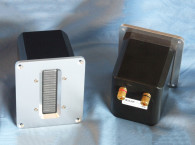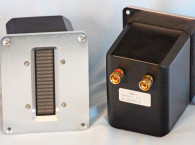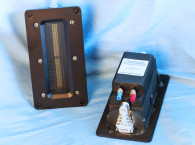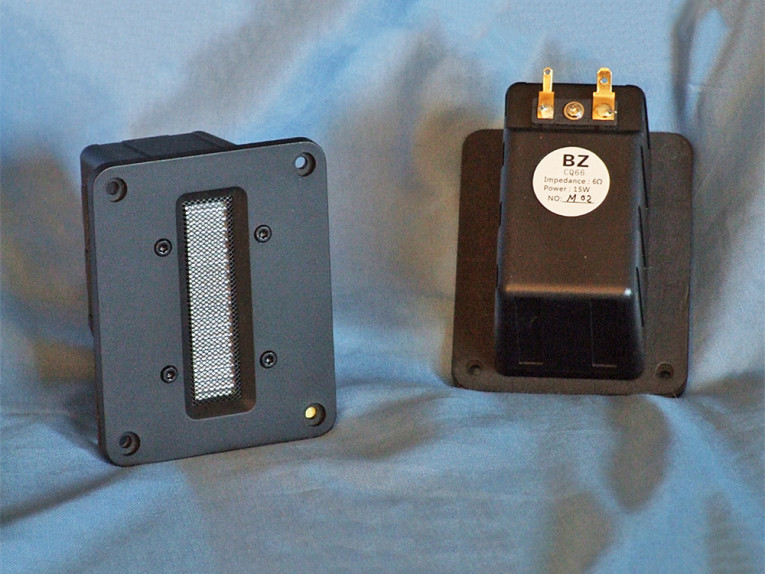
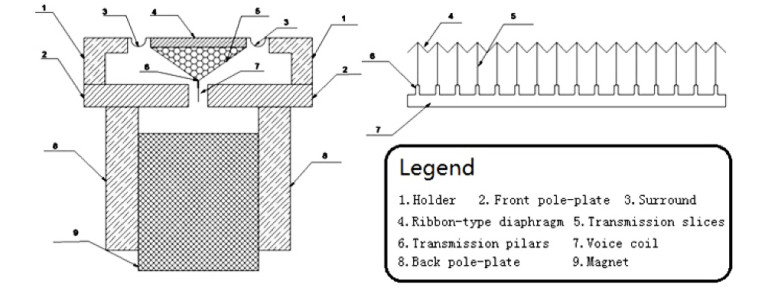
The CQ66 utilizes a 65 mm × 15 mm pleated aluminum diaphragm (the CQ76’s diaphragm is 80 mm × 20 mm). The pleats are mechanically connected to a section of the voice coil (see Figure 1). The CQ66 uses a closed-back design injection-molded rear cavity. Other features for this design include the neodymium motor system, injection molded faceplate (the CQ76 has a brushed aluminum faceplate), a black mesh screen protecting the diaphragm, and a pair of gold-plated terminals.


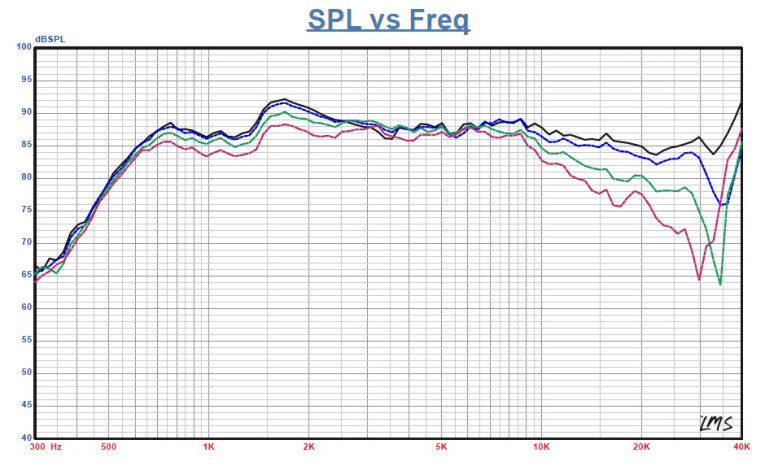
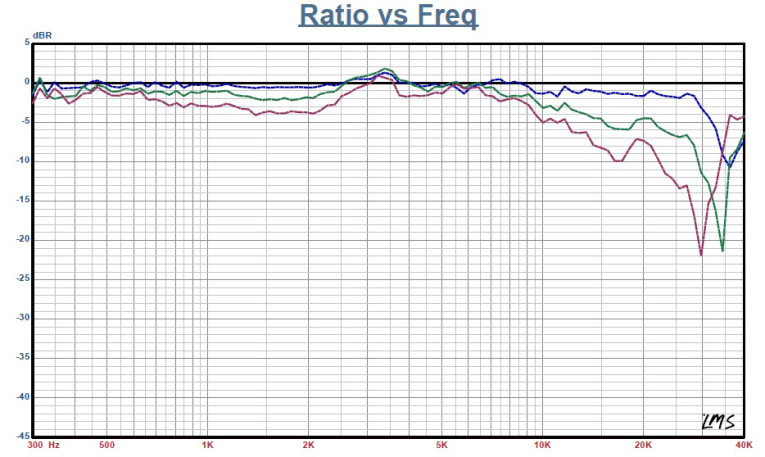
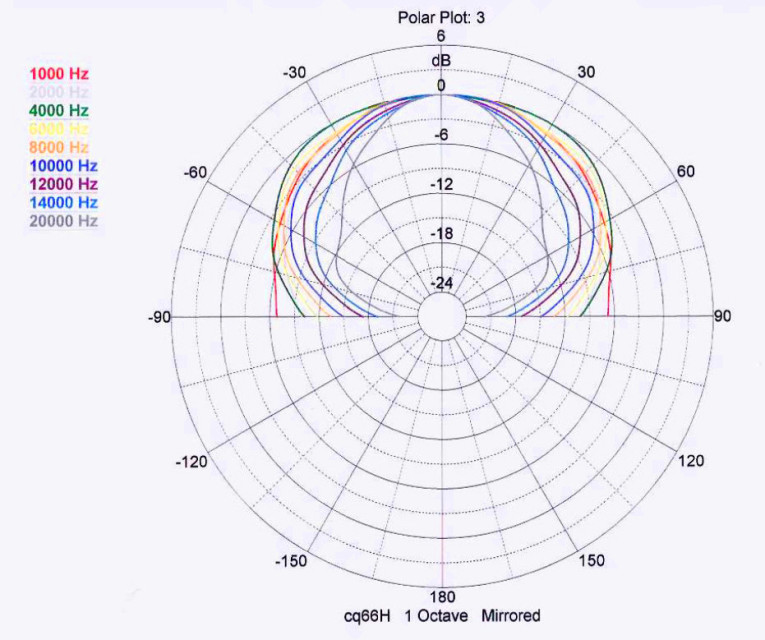
I commenced the CQ66’s analysis by performing a 300-point impedance curve (see Figure 2). Unlike most ribbon devices, this transducer’s impedance features multiple resonance peaks, suggesting a complex cavity, plus a sharp reactive rise in the impedance above 10 kHz. The CQ66’s direct current resistance (DCR) measured 2.3 Ω with a minimum impedance of 4.85 Ω at 2.6 kHz.
Next, I mounted the CQ66 in an enclosure with a 12” × 6” baffle area and measured the on- and off-axis SPL with sweeps at 0°, 15°, 30°, and 45°. I used gated 100-point 2.83 V/1 m sine wave sweeps from 300 Hz to 40 kHz. Data was then taken in both the horizontal and vertical planes.
Figure 3 shows the CQ66’s on-axis response. The CQ66’s frequency response was a smooth even ±2.13 dB, ranging from 3 kHz to 20 kHz, with effective output out to 40 kHz. There was peaking in the response centered at about 1.75 kHz, but with a 2 kHz crossover, it shouldn’t be an issue.
Figure 4 depicts the on- and off-axis frequency response in the horizontal plane, which somewhat resembles the typical directivity of a 1” dome tweeter. Figure 5 shows the normalized 0° to 45° frequency response. Figure 6 shows the new CLIO Pocket generated horizontal polar plot.
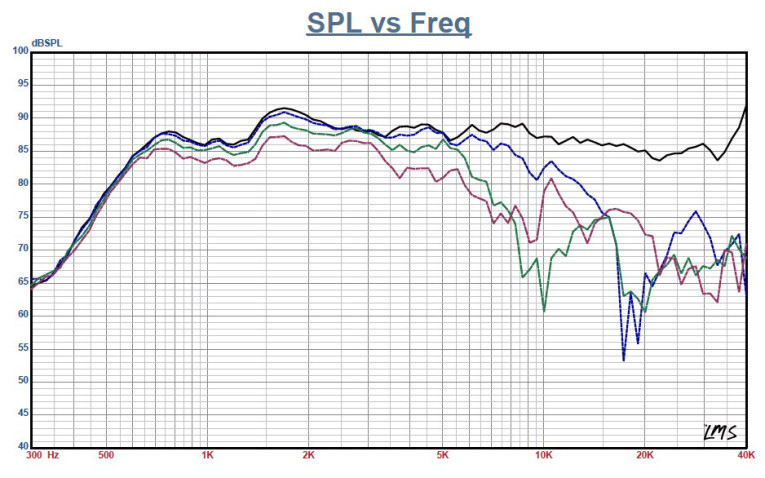

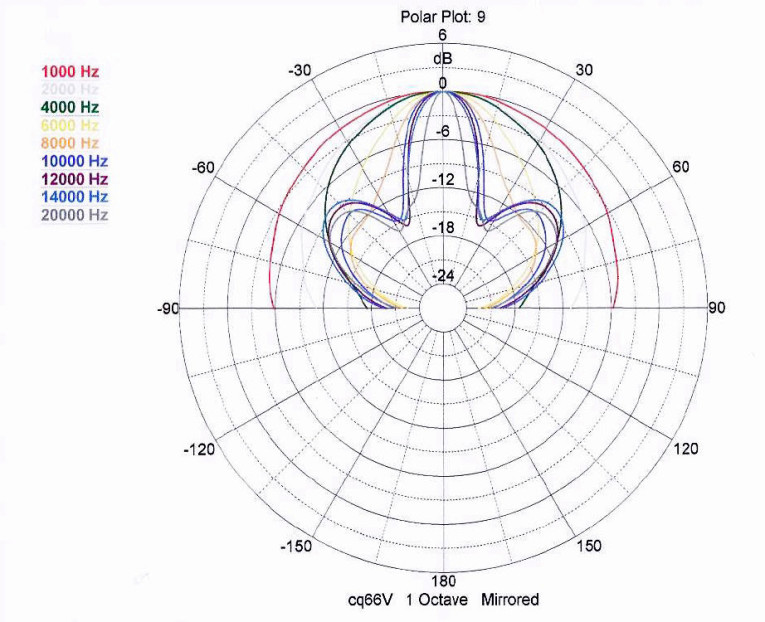
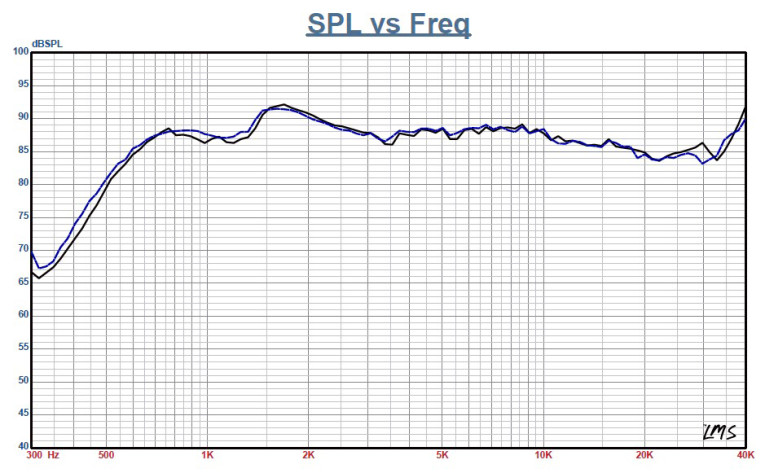
Because the aspect ratio of the CQ66’s aperture is like most ribbons, there is substantial directivity in the vertical plane as seen in the on and off axis 0° to 45° curves shown in Figure 7, normalized shown in Figure 8, and the vertical polar plot shown in Figure 9. Figure 10 shows the two-sample SPL comparison, which indicates that both CQ66 samples were closely matched within the relevant operating range.
Then, I fired up the Listen SoundCheck analyzer (SoundCheck 14.1) with the SCM microphone and the SoundConnect preamp/power supply (provided courtesy of Listen, Inc.). I used the built-in pink noise generator and SLM utilities to set the SPL to 94 dB/1 m (5.84 V). I relocated the 0.25” SCM microphone to 10 cm from the CQ66’s faceplate and ran the distortion curves shown in Figure 11. The stimulus was limited to 1 kHz as its lowest frequency.
Last, I performed an impulse measurement, and imported the data into the Listen SoundMap software, windowed out the room reflections, and created the Cumulative Spectral Decay (CSD) plot shown in Figure 12 and the Short-Term Fourier Transform (STFT) shown in Figure 13.
For more information, visit www.bzspeakers.com.


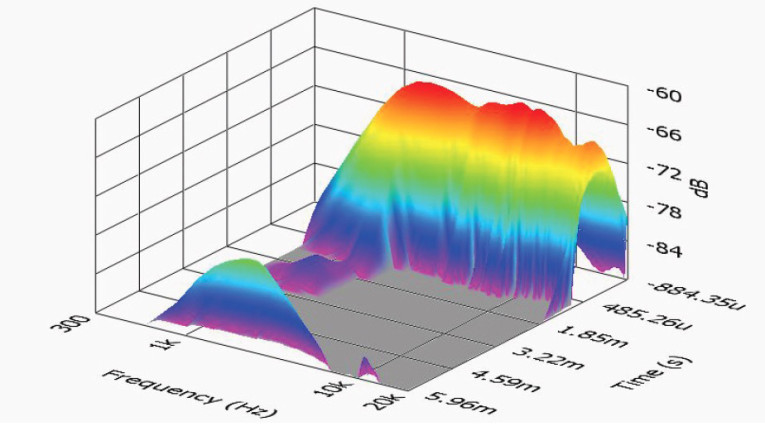
This article was originally published in Voice Coil, May 2016




